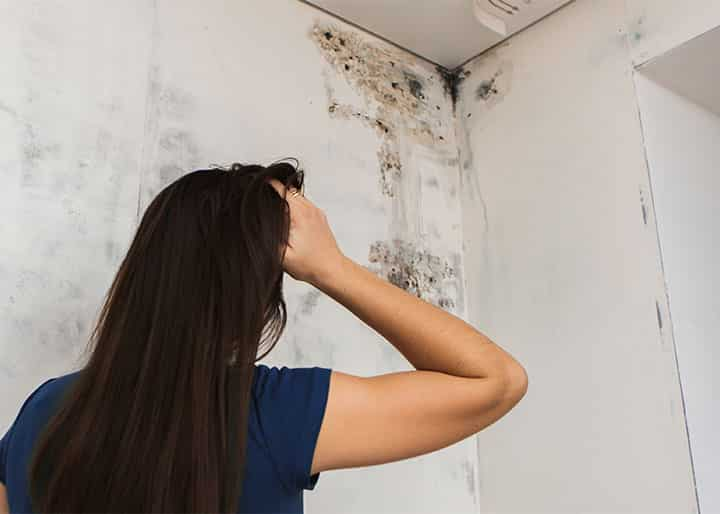Is It Dangerous To Sleep In A Room With Mold On The Ceiling?
Mold is a common household problem that can cause serious health risks if left unaddressed. Mold thrives in warm and damp environments, making bathrooms, kitchens, and other areas of the home prone to mold growth.
One common question that people often ask is whether it is dangerous to sleep in a room with mold on the ceiling. The answer is not straightforward as it depends on several factors, including the type and severity of the mold, the length of exposure, and the individual's health status.
To better understand the potential dangers of sleeping in a room with mold on the ceiling, it is important to first learn about the risks of mold exposure. Mold spores can cause a range of health problems, including respiratory infections, allergic reactions, and even neurological disorders in some cases.
People with weakened immune systems, respiratory issues, or allergies are particularly vulnerable to the effects of mold exposure. In this article, we will examine the risks of mold exposure, how to identify the type and severity of mold, and what steps to take to remove mold from your home and protect yourself from its harmful effects.
Understand the Risks of Mold Exposure
A comprehensive understanding of the potential health risks associated with mold exposure is essential before determining the safety implications of sleeping in a room with mold on the ceiling.
Mold is a type of fungus that thrives in damp environments and releases tiny spores that can be inhaled.
Exposure to these spores can cause a range of health problems, depending on the individual's sensitivity and the type of mold.
Common symptoms include respiratory issues, such as coughing and wheezing, as well as skin irritation and eye irritation.
More severe reactions can occur in people with compromised immune systems, such as those with asthma or allergies.
It is important to note that not all molds are toxic, but some can produce mycotoxins that can lead to serious health problems.
Therefore, it is crucial to address any mold growth in your home and take preventative measures to ensure a safe living environment.
Identify the Type and Severity of Mold
Identifying the type and severity of mold in an indoor environment is crucial for determining the potential health risks and necessary remediation measures. There are various types of molds, and some may be more harmful than others.
For instance, black mold, also known as Stachybotrys chartarum, is a type of mold that produces mycotoxins, which can lead to serious health problems, including respiratory issues, skin irritation, and even neurological damage. Other molds, such as Aspergillus and Penicillium, may not be as toxic but can still cause allergic reactions and respiratory problems.
In addition to identifying the type of mold, the severity of the infestation must also be considered. A small patch of mold may not pose a significant health risk, but a large infestation can release a significant amount of spores into the air, increasing the risk of exposure.
It is important to address mold growth promptly and effectively to minimize potential health risks.
Take Immediate Action to Remove the Mold
Once the type and severity of mold are determined, prompt and effective action must be taken to remove it and minimize potential health risks.
Mold removal should be conducted by professionals trained in mold remediation and equipped with appropriate personal protective equipment.
The removal process should include containment of the affected area to prevent mold spores from spreading, removal of all mold-infested materials, thorough cleaning of surfaces, and proper disposal of contaminated materials.
It is important to address the underlying cause of the mold growth, such as moisture or humidity, to prevent future mold growth.
Failure to take immediate action to remove mold can result in health problems, including respiratory issues, allergies, and even neurological symptoms.
Therefore, it is crucial to prioritize mold removal as soon as it is detected to ensure a safe and healthy living environment.
Protect Yourself While Removing Mold
To ensure personal safety during mold removal, it is essential to wear protective gear and follow proper containment procedures. Mold spores can cause respiratory problems and other health issues, so it is crucial to minimize exposure.
Protective gear such as gloves, goggles, and respirators should be worn during the removal process. Additionally, proper containment procedures should be followed to prevent the spread of mold spores to other areas of the home.
This may include sealing off the affected area with plastic sheeting and using negative air pressure to push the spores outside. By taking these precautions, individuals can safely remove mold from their homes without putting their health at risk.
Monitor Your Home for Future Mold Growth
It is imperative to stay vigilant and keep an eye out for any signs of mold growth in the future, as prevention is always better than cure.
Using a metaphor, it's like keeping an eye on a pot of water that has previously boiled over, to ensure it doesn't happen again.
Mold can grow in any damp or humid environment, and it can cause serious health problems if left unchecked.
To prevent future mold growth, it's essential to keep your home well-ventilated and dry, fix any leaks or water damage promptly, and monitor areas that are prone to mold growth, such as bathrooms and kitchens.
Regular cleaning and maintenance can also help prevent mold from taking hold.
By taking these steps, you can ensure that your home remains a safe and healthy environment for you and your family.
Connect with Mold Remediation experts near you
Need help with your next Mold Remediation project? We're here for you! Call us and we'll put you in touch with experienced, reliable Mold Remediation experts in Abilene, Texas.
